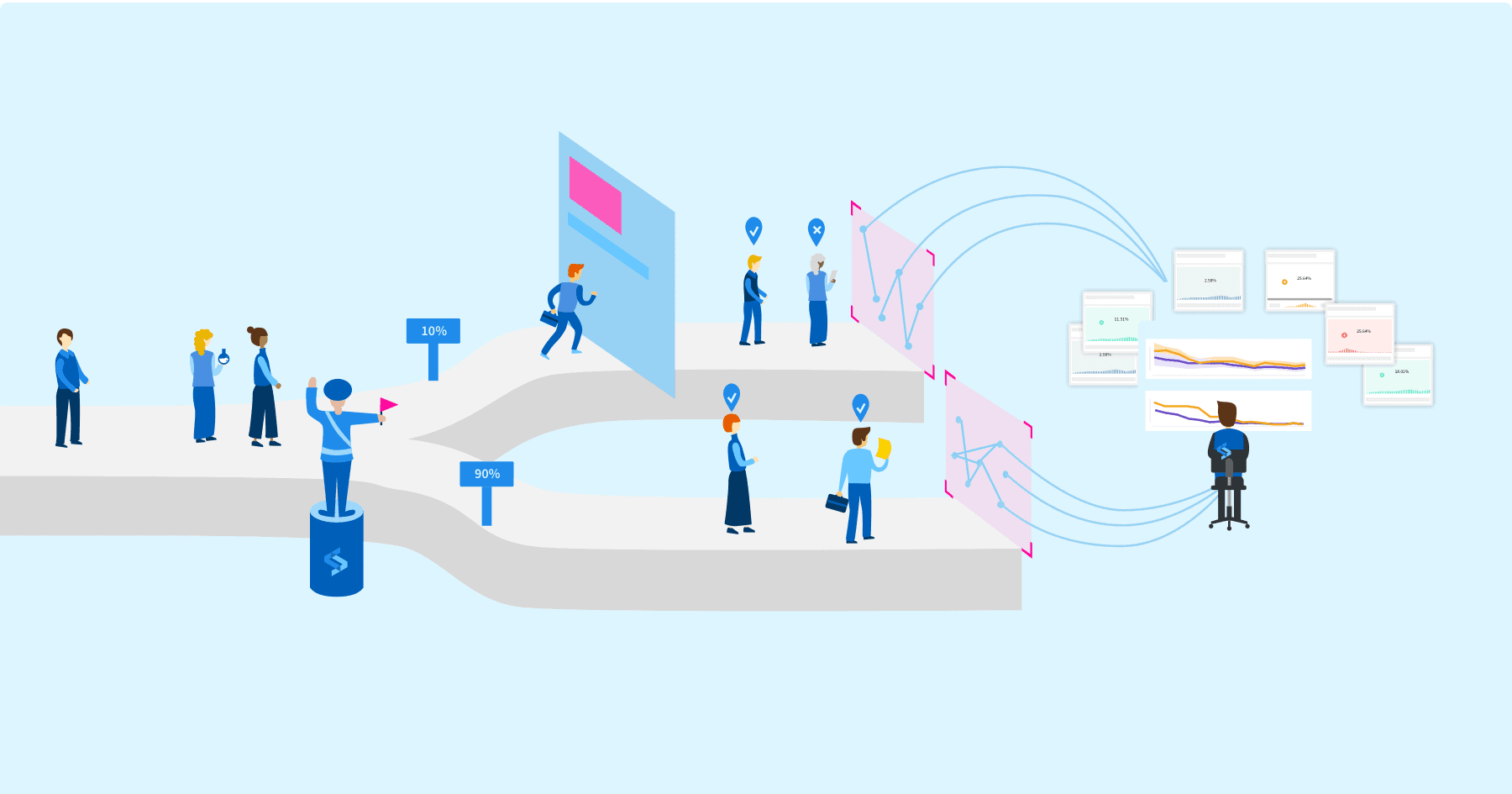In a modern software development environment that uses Continuous Integration (CI) to deploy code along a Continuous Delivery (CD) pipeline, having a robust feature flag management solution can bring a wide variety of benefits to an organization.
1. Continuous Delivery
Continuous delivery means that code can be built and released on an ongoing basis, and that all changes take place within a feature flagging solution that prevents the work of the software development team from impacting the rest of the codebase.
2. Dark Launching
By using feature flags, any new or untested features in the code are toggled off by default, and won’t even be seen by users until toggled on.
3. Trunk Based Development
Under a continuous integration regime, all new code is merged directly into the main trunk, and every push to the main/trunk is accompanied by an immediate and rapid (within minutes) build and test procedure.
4. Fast Feedback
Since every change is implemented under a deactivated feature flag, and every commit triggers the automated build and test operations, teams will be made aware right away of any problems new code might create, and they can address the problems in a fast and efficient manner.
5. Safe and Selective Release Targeting
With feature flagging, new features can be targeted to users based on any number of criteria: internal or external testers, users signed up for canary releases, or simply a subset that you know a new feature will have a more measurable or controllable impact on for customer analysis.
6. Split testing on an AB testing platform
When new features are being tested for release, some teams require that the new version be proven equal or better than status quo. The do split testing, also known as A/B testing to compare them side by side in production. This way, new features can be tested for actual user engagement, in a live environment without duplication of sensitive data that staging and user acceptance environments entail.
7. Fast Response Times
Sometimes the unexpected happens, but with a feature flag management system in place, authorized members of your team will be able to selectively disable or re-enable any feature flag for groups of users, or disable the feature entirely.
8. Deliver Custom Features
One of the benefits of granular targeting is the ability to control who can see or use a given feature based on user attributes. Temporary or permanent access to certain features can be controlled using feature flags.
9. Release How You Want, When You Want
With feature flags, the release of a new feature can be targeted to roll out to different groups of users at different times, in order to test how those groups respond based on criteria such as location or user type.
10. Securely Disable Old Features
As old features are replaced by new ones, or cease to be useful any more, features can be targeted for disabling in just as detailed and gradual way as they were rolled out.
11. Live Usability Testing
Having a modern, well-evolved feature flag management system means having a well-evolved interface to manage those flags. Results can be monitored in real-time or collected for customer analysis in order to make more informed decisions about the impact a feature is having.
12. Split Testing for Any Metric
Among the myriad of metrics that can be tracked are engineering KPI’s such as page load time, database response time, and support ticket count related to a given feature. Whatever aspect of a given feature your team may wish to analyze, data can be aggregated in a highly specific way.
Wrapping Up
Having a well-managed feature flag system can help your company accelerate time to value, mitigate risk, and make smarter decisions. Try Split for free to get started with feature flags and read more about how feature flags work.
Get Split Certified
Split Arcade includes product explainer videos, clickable product tutorials, manipulatable code examples, and interactive challenges.
Switch It On With Split
The Split Feature Data Platform™ gives you the confidence to move fast without breaking things. Set up feature flags and safely deploy to production, controlling who sees which features and when. Connect every flag to contextual data, so you can know if your features are making things better or worse and act without hesitation. Effortlessly conduct feature experiments like A/B tests without slowing down. Whether you’re looking to increase your releases, to decrease your MTTR, or to ignite your dev team without burning them out–Split is both a feature management platform and partnership to revolutionize the way the work gets done. Switch on a free account today, schedule a demo, or contact us for further questions.
